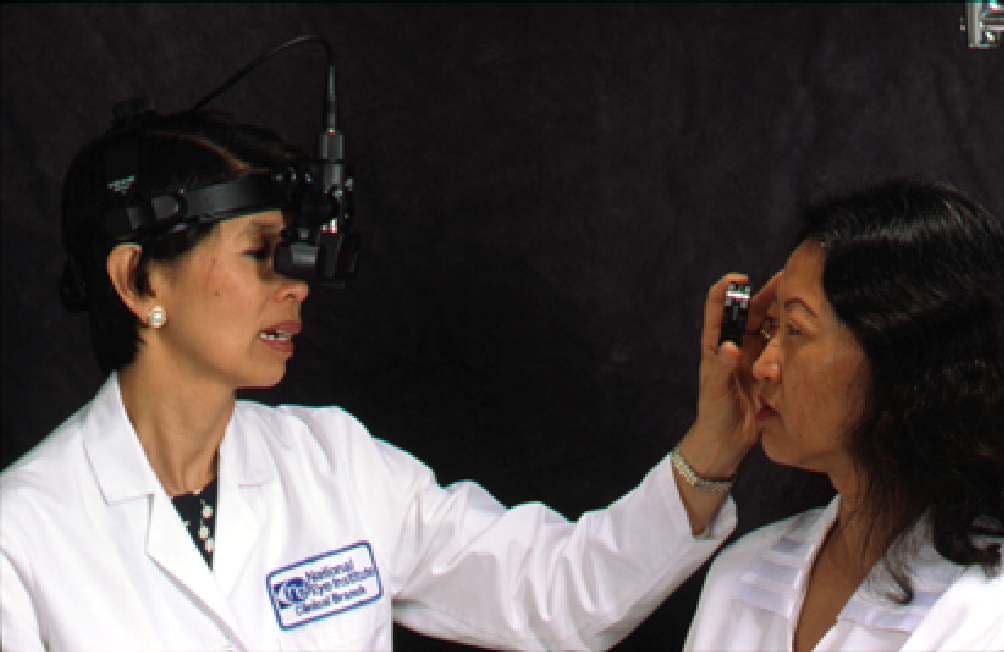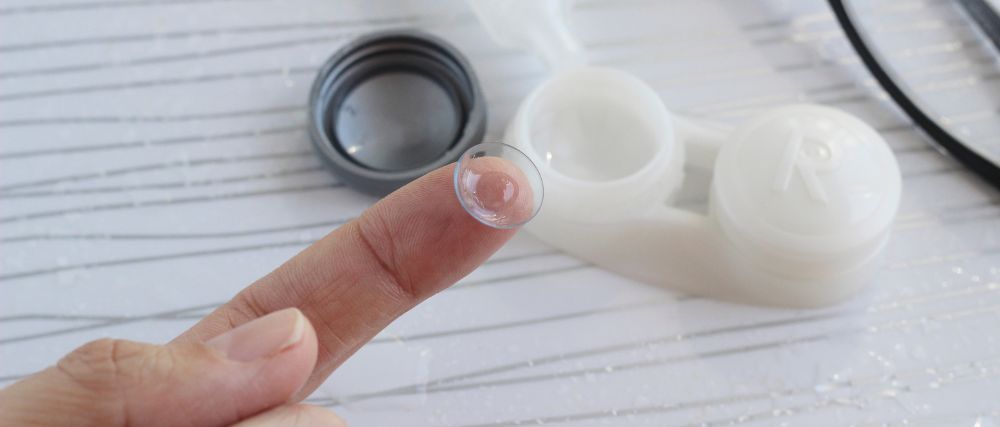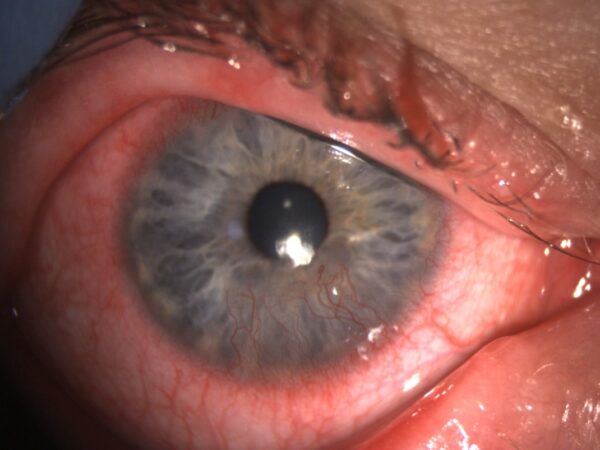Assessing vulnerable adults with additional needs
Tania Constable is an experienced clinical optometrist who has worked both in the national paediatric hospital (CHI), Ireland and in secondary care for a number of years. Tania has an MSc in Clinical Optometry awarded by Cardiff University along with further qualifications in paediatric eye care, glaucoma and medical retina and neurodiversity. She is currently President of Optometry Ireland.
In this article Tania’s will discuss assessing vulnerable patients with additional needs including those with intellectual disability (ID).
Assessing vulnerable adults with additional needs
How is intellectual disability (ID) defined?
The WHO defines intellectual disability (ID) as ‘the significantly reduced ability to understand new or complex information and to learn and apply new skills.’ Common conditions associated with ID include cerebral palsy (CP), downs syndrome, and autism spectrum disorder (ASD). Adults with intellectual disabilities are ten times more likely to have to have serious eye conditions than the neurotypical adult population1. Approximately 6 in 10 adults with intellectual disabilities need glasses and often need support to feel comfortable wearing them.1
Aetiology/Condition | Prevalence |
Prematurity or low birth weight | 1/10 |
Downs syndrome | 1/700 |
Cerebral Palsy | 1/400 |
Autism spectrum disorder | 1/18 |
Hydrocephalus | 1/1000 |
Table 1. Prevalence of common systemic conditions associated with ID.4
It is important to consider the impact of reduced vision on the individual’s quality of life, independence, social inclusion, and access to services and transport. This is why it is important for all adults with intellectual disabilities to have access to eye care to prevent avoidable sight loss4. Some individuals with ID may not be able to recognise they have an issue with their vision which is why routine eye exams are so important.1
Common causes of visual impairment in people with ID3
- Amblyopia
- Strabismus
- Congenital cataract
- Acquired cataract.
- Nystagmus
- Corneal conditions
- Optic pathway abnormalities
- Perceptive and interpretative difficulties
What are the barriers to accessing care for patients intellectual disability?
There can be a number of barriers including:
- Communication can be a barrier for those individuals who are preverbal or have other communication difficulties. Communication is one of the most significant barriers to accessing eye care.1
- Clinical environment with equipment and bright lights can be confronting/overwhelming.
- Lack of training and experience amongst health professionals.
- Carers misinformed as to whether the exam is possible. Carers may assume because the individual does not speak or read that an eye exam is not possible.2
- Carers may not realise the impact glasses could have on the individual’s quality of life and how early detection of some eye conditions like glaucoma is important. They may not feel glasses would be beneficial as the person does not read or watch TV etc.1
- Diagnostic overshadowing: attributing a visual behaviour to another condition without considering an ocular reason for the visual behaviour4
- Concerns about cost, access and busy waiting rooms
What practical steps can eyecare professionals take to help improve the care for patients with additional needs?
Communication
Reasonable adjustments in communication during the eye examination can make a difference:
- Take time to understand the person’s preferred method of communication1
- Speak directly to the person NOT the support person5
- A support person can highlight the patient’s responses – such as small gestures that indicate yes/no or indicate distress.
- Using literal terms and speak slowly. Allowing for any auditory delay.
- Don’t give too much complex information at once.
- Don’t say the same thing in multiple different ways.
- If there is an auditory delay, wait before launching into another instruction etc….A useful tip is to count to 5.
- Watch the person’s body language as this can provide a wealth of information.
- Be aware of your own body language as a clinician.
- Explain and demonstrate3
Before the appointment
Practice visits can take some of the mystery out of process and alleviate anxiety in relation to eye exams. Many people with ID are wary of unfamiliar settings.3
Online and written patient information resources such as photos of clinic, team and exam room can also be helpful when a practice visit isn’t possible. Digital resources are not always accessible to older adults with ID. Seeability have easy to read material on their website which can be useful to post out the patient ahead of their appointment, so they know what to expect before their appointment.2
History and symptoms questionnaires can be sent to caregivers before the appointment. This allows for a better flow during the eye exam and highlights specific visual concerns to the optometrist ahead of time. It can also provide information on preferred communication for example signing in Makaton. It is also possible to use this as a tool to gather information about the patient’s mobility aids for example are they a wheelchair user.
Scheduling appointments for quieter times of day can improve the experience for vulnerable adult as there is less waiting, and the waiting room is less busy.3 Allowing for longer appointment times and communicating this to caregivers. Broken down appointments can be beneficial for some patients especially if they are less familiar with eye examinations.3
Carers may highlight some behaviours of concern that may suggest difficulties with vision and these can include:3
- Anxiety in unfamiliar settings
- Unwillingness to move away from their immediate setting.
- Hesitancy on steps and dimly lit conditions
- Low mood
- Anger or frustration.
- Eye poking or rubbing
- Loss of interest in friends, family, TV, reading
- Undue alarm at unfamiliar noises or sounds
- Self-injurious behaviour
During the appointment
Visual acuity testing
- Testing with both eyes open first to build confidence.
- Single optotype testing – visual crowding can be an issue for some adults with ASD.
- Preferential looking tests or matching tests are useful options for preverbal patients6
- Near visual acuity measurement is important even in pre presbyopes as there is a higher incidence of accommodative difficulties in this population6
- Functional visual assessment is an alternative if a formal visual acuity measurement is not possible3. There are also useful tools like the Bradford visual function box. Seeability have an example of a functional visual function assessment on their website.
- Use technology like the Peekaboo app which can estimate vision5.

It is more common for individuals with ID to have reduced distance visual acuity. In individuals with Downs syndrome the reduced distance visual acuity may be as a result of high refractive error and/or cortical differences although there has been some suggestion that the reduced visual acuity often measured in individuals with Downs syndrome could be avoided by early correction of any refractive error noted.4
Binocular vision assessment
A flexible approach may be necessary to assess the binocular vision, and it may not be a priority depending on the patient’s current needs and symptomology.
If a cover test is not tolerated, consider assessing motor fusion using a 10 or 20BO or sensory fusion by measuring stereopsis using a test like a Frisby stereo test which doesn’t rely on the use of glasses.
There is a higher rate of strabismus in some populations of patients with intellectual disabilities.4
Condition | Prevalence |
Premature | 14% (born before 28 weeks) |
Downs syndrome | 35% |
ASD | 8% |
CP | 50% |
Table 2. Prevalence of strabismus in individuals with ID.
Accommodative assessment
It is important to assess accommodation as accommodation deficits in this population are more common.4
Condition | Accommodative deficit |
ASD | 3x more likely |
Downs syndrome | 80% (both amplitude and accuracy) |
CP | 50-60% (accommodative facility) |
Table 3. Prevalence of accommodative deficits in individuals with ID.
Refractive status
Focus on objective tests such as retinoscopy (including Mohindra retinoscopy technique), and auto refraction. Dilation can make retinoscopy easier in the presence of small pupils +/ lens opacities. Always note the quality of the reflex.
Patients with intellectual disabilities may have communication challenges or be inclined to give you the answer they think you want to hear which may lead to a less reliable subjective refraction.
There is a higher incidence of refractive error in this population, and it is likely to be of a higher magnitude than the neurotypical population.4
Condition | Prevalence |
Premature | More likely to have myopia and astigmatism |
Downs syndrome | 80% of children has been suggested in some studies(4) |
ASD | 20-30% |
CP | 60-80% |
Table 4. Prevalence of refractive error in individuals with ID.
Dilation
This can be an aid for both retinoscopy and ophthalmoscopy. It can also allow for easy use of imaging such as wide field imaging (for example, Optos) and fundus photography as an adjunct to ophthalmoscopy.
Always get consent before the instillation of drops. Home dilation can be better tolerated in some individuals.
Ocular health
Headset indirect ophthalmoscopy can be a useful technique if the patient is unable to place their head in the slit lamp. If a headset indirect ophthalmoscope is not available some optometrists find they can use a direct ophthalmoscope and a 20D volk lens to view the fundus (dilated).
There is a higher incidence of ocular pathology in some populations with ID.
Condition | Prevalence |
Prematurity or low birth weight | ROP (retinal detachment) |
Downs syndrome | Cataracts, Blepharitis Keratoconus |
CP | Visual field, Cerebral visual impairment, Abnormal optic nerve appearance |
ASD | Cerebral visual impairment |
Table 5. Common pathology in individuals with ID.
After the appointment
Consider a follow up appointment with the dispensing optician or optometrist to check if any adjustments need to be made rather than waiting for the next eye exam which could be in 1-2 years to check tolerance.5
Send an accessible written report on eye exam which can also be shared with other professionals supporting the person.
It can be useful with this group of patients to keep the GP updated.
Shorter intervals between eye exams may be needed to build familiarity with the practice and the team.
Review your DNA policy in relation to this population of patients. As the person may need support to attend the appointment and the support person may not have been available.
Spectacle dispensing
Good dispensing is critical for someone with an intellectual disability as they may not be able to communicate a non – tolerance to a frame or spectacle lens.6 Adults with ID should be dispensed by a dispensing optician or an optometrist. To overcome some barriers to wearing glasses especially for a first-time wearer, consider letting the person take old frames home to get used to the feel of glasses.
For patients with cerebral palsy consider if they have a head posture when setting optical centres and heights.
For presbyopes and those requiring a reading addition consider a bifocal rather than a varifocal as it can be more accessible for patients with ID.
The key point is tailoring your approach to the individual patient.
Here are my Top tips for Assessing vulnerable adults with additional needs
- Needs led exam.
- Be flexible.
- Allow more time.
- Use of more handheld devices.
- Adapt routine to individual patient’s needs.
References:
- Public Health England Guidance 2020. Eyecare and people with learning disabilities: making reasonable adjustments.
- https://www.seeability.org
- https://www.rcophth.ac.uk/wp-content/uploads/2020/08/Eye-Care-Services-for-Adults-with-Learning-Disabilities.pdf
- Donaldson, L. Common ocular and systemic associations of learning disability. OT, 2018.
- Miller, L. Seeability peer review session. Effectively managing patients with learning disability. OT 2024.
- Donaldson, L. The needs of patients with learning disabilities. OT 2017.
Latest Articles




HCP Popup
Are you a healthcare or eye care professional?
The information contained on this website is provided exclusively for healthcare and eye care professionals and is not intended for patients.
Click ‘Yes’ below to confirm that you are a healthcare professional and agree to the terms of use.
If you select ‘No’, you will be redirected to scopeeyecare.com
This will close in 0 seconds
